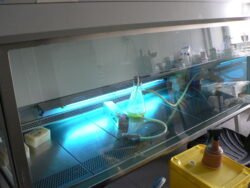
Difference Between Ultrafiltration And Microfiltration

Water purification technologies are essential for a range of applications, from providing safe drinking water to industrial processes. Two of the most widely used techniques in this domain are ultrafiltration (UF) and microfiltration (MF). While both are membrane technologies designed to filter out impurities, they differ in their pore sizes, mechanisms of action, and applications. This article delves deeply into the differences between ultrafiltration and microfiltration, highlighting their individual characteristics, advantages, limitations, and use cases.
1. Introduction to Membrane Filtration
Membrane Filtration is a method where a membrane acts as a barrier, selectively allowing certain substances to pass through while retaining others. These processes are highly effective for water treatment, serving both community water supplies and individual commercial needs. At the core, both ultrafiltration and microfiltration belong to the membrane filtration family, which includes other methods like reverse osmosis (RO) and nanofiltration (NF).
2. Basics of Microfiltration
Microfiltration (MF) involves the use of a membrane with pore sizes typically ranging from 0.1 to 10 micrometers (microns).
Mechanism of Microfiltration
The primary mechanism of microfiltration is sieving. The membrane acts as a physical barrier that blocks particular impurities based on particle size. During microfiltration:
-
- Contaminants larger than the membrane’s pore size are retained.
-
- Smaller particles, dissolved salts, and other solutes pass through the membrane.
Applications of Microfiltration
Microfiltration is renowned for its ability to remove bacteria, suspended solids, and some large viruses. Some common applications include:
-
- Drinking Water Treatment: Microfiltration can effectively remove bacteria and particulate matter to make water safe for drinking.
-
- Food and Beverage Industry: It’s used for the purification and sterilization of liquids, including wine and beer.
-
- Pharmaceuticals: Microfiltration is employed for the sterilization of products without using heat.
-
- Wastewater Treatment: It is used in the treatment of industrial wastewater and municipal effluent.
Advantages of Microfiltration
-
- High Flow Rates: Because the pores are relatively larger, membranes facilitate higher flow rates and require less pressure, which translates to lower operation costs.
-
- Energy-Efficient: It operates at lower pressures compared to other filtration methods like reverse osmosis, resulting in reduced energy consumption.
-
- Effective Removal of Suspended Solids: It is highly efficient in removing suspended solids and large-size pathogens.
Limitations of Microfiltration
-
- Limited Removal of Dissolved Solids: Microfiltration cannot effectively remove dissolved solids such as salts, ions, and smaller organic molecules.
-
- Membrane Fouling: Over time, the membranes can become clogged with impurities, requiring periodic cleaning or replacement.
3. Basics of Ultrafiltration
Ultrafiltration (UF) employs membranes with smaller pore sizes, generally ranging from 0.01 to 0.1 micrometers (microns).
Mechanism of Ultrafiltration
Ultrafiltration works through a combination of size exclusion and adsorption. The process:
-
- Retains particles and macromolecules larger than the pore size.
-
- Allows water, small ions, and low-molecular-weight compounds to pass through.
Applications of Ultrafiltration
Due to its finer filtration capabilities, ultrafiltration offers a broad range of applications:
-
- Drinking Water Treatment: UF membranes remove even smaller particles and pathogens compared to MF, enhancing water purification.
-
- Pharmaceutical Industry: Used in the production of sterile and pyrogen-free water.
-
- Dairy Industry: Employed for concentrating and purifying proteins in milk and whey.
-
- Wastewater Treatment: Works extensively in the treatment of industrial effluents and the recycling of water.
Advantages of Ultrafiltration
-
- Enhanced Purity: Provides a higher level of purity compared to microfiltration by removing smaller contaminants.
-
- Consistency: Produces a consistently high-quality filtrate, especially crucial in industries requiring stringent standards.
-
- Pathogen Removal: More effective at removing viruses and other harmful microorganisms.
Limitations of Ultrafiltration
-
- Higher Energy Requirements: Requires higher operational pressure compared to microfiltration, leading to increased energy consumption.
-
- Costs: Higher operational and maintenance costs owing to the finer membrane pores and higher likelihood of fouling.
-
- Limited Removal of Dissolved Ions: Like microfiltration, ultrafiltration is ineffective in removing dissolved salts and very small molecules.
4. Critical Comparisons
Understanding the key differences between ultrafiltration and microfiltration is essential for determining which method to employ for a specific application.
Pore Size
-
- Microfiltration: Pore sizes are bigger, ranging from 0.1 to 10 micrometers, suitable for removing larger particles and some microorganisms.
-
- Ultrafiltration: Smaller pore sizes, between 0.01 to 0.1 micrometers, making it more effective for removing smaller pathogens and certain macromolecules.
Operating Pressure
-
- Microfiltration: Requires lower pressures, often between 1-2 bar (around 14.5-29 psi), making it relatively energy-efficient.
-
- Ultrafiltration: Operates at higher pressures, usually between 2-5 bar (around 29-72.5 psi).
Filtration Efficiency
-
- Microfiltration: Effective in removing suspended solids, bacteria, and some large viruses.
-
- Ultrafiltration: Offers finer filtration capabilities, removing smaller contaminants and most viruses.
Energy Consumption and Cost
-
- Microfiltration: Generally has lower energy consumption and operational costs due to lower pressure requirements.
-
- Ultrafiltration: Higher energy consumption and higher costs due to the finer pores and higher pressure needed for operation.
Fouling and Maintenance
-
- Microfiltration: Less prone to fouling but still requires periodic cleaning or membrane replacement.
-
- Ultrafiltration: More susceptible to fouling due to smaller pores, necessitating more frequent maintenance and higher costs.
5. Combining Filtration Technologies
In many applications, combining microfiltration and ultrafiltration can be beneficial. For instance, a two-stage system may first use microfiltration to remove larger particles and bacteria, followed by ultrafiltration to eliminate smaller pathogens and finer impurities. This hybrid approach offers several advantages:
-
- Enhanced Filtration: Achieves a higher level of water purification and purity.
-
- Extended Membrane Life: Pre-filtering with microfiltration can reduce the fouling of ultrafiltration membranes.
-
- Cost-Effectiveness: While the initial setup may be costly, the long-term operational efficiency and reduced maintenance often offset these expenses.
6. Real-World Applications and Case Studies
Drinking Water Plants
In municipal water treatment plants, ultrafiltration is commonly preferred due to its ability to remove smaller pathogens and achieve higher purity levels. However, in scenarios where the water source is relatively clean with low turbidity, microfiltration can be sufficient.
Industrial Wastewater Treatment
Industries often generate wastewater containing a mix of suspended solids, oils, and other contaminants. Microfiltration can handle larger particles and oils effectively, whereas ultrafiltration is employed to remove smaller organic compounds and microorganisms.
Dairy and Food Processing
In the dairy industry, ultrafiltration is frequently used to concentrate protein and remove lactose, providing a high-value product. Microfiltration, on the other hand, may be employed for bacterial reduction and removing sediment from raw milk.
Pharmaceutical Production
Both microfiltration and ultrafiltration are integral to pharmaceutical production. Ultrafiltration is utilized for protein concentration and buffer exchange processes, while microfiltration is often used for sterilization and removal of contaminants from drug formulations.
7. Future Trends and Innovations
The fields of ultrafiltration and microfiltration are evolving, driven by advancements in materials science and technology. Here are some future trends and innovations:
Advanced Membrane Materials
The development of new membrane materials, such as graphene and ceramic membranes, promises improved durability, lower fouling rates, and enhanced filtration efficiency. These materials are likely to blur the lines between microfiltration and ultrafiltration in terms of capabilities and cost.
Hybrid Technologies
Integration of membrane technologies with other purification methods is on the rise. For instance, combining UF/MF with nano-oxidation processes or biological treatments can result in more efficient and comprehensive water treatment systems.
Smart Monitoring Systems
With the implementation of IoT (Internet of Things) technologies, real-time monitoring and adaptive control systems can optimize the performance and maintenance schedules of filtration systems, thereby reducing downtime and operational costs.
Energy Recovery
Innovations like pressure retarded osmosis (PRO) and energy recovery devices are being explored to make these filtration methods more energy-efficient.
Conclusion
Ultrafiltration and microfiltration are indispensable technologies in modern water treatment and purification systems. While they share similarities, understanding their differences is crucial for optimizing their application in various fields. Microfiltration, with its larger pore size, is suitable for applications needing high flow rates and energy efficiency, like removing suspended solids and larger pathogens. Ultrafiltration, with its finer pore structure, excels in removing smaller contaminants and provides higher purity levels, though at a higher energy and operational cost.
The dynamic interplay between ultrafiltration and microfiltration can be seen as two sides of the same coin, each complementing the other in achieving a common goal – the production of clean, safe water. As we move forward, innovations in materials science, hybrid systems, and smart technologies will continue to enhance the efficiency and capabilities of these essential filtration methods.

